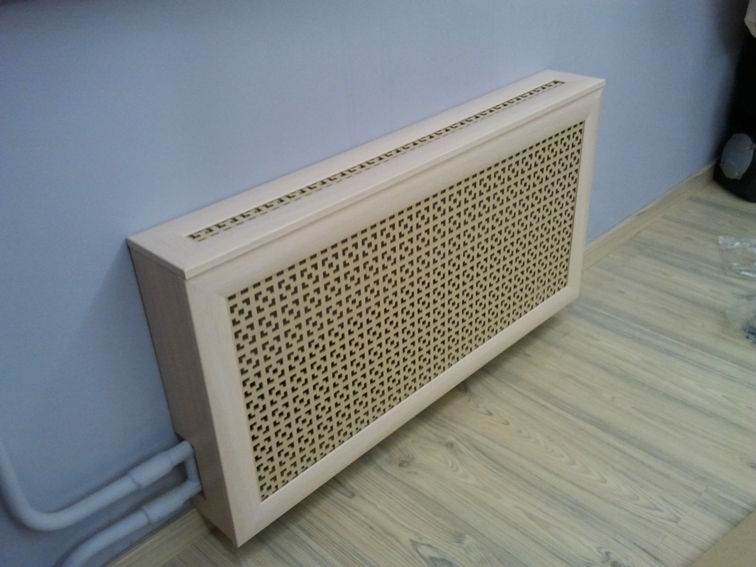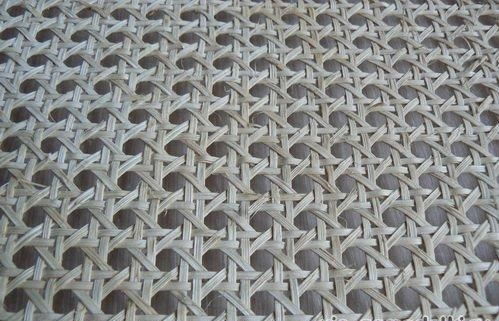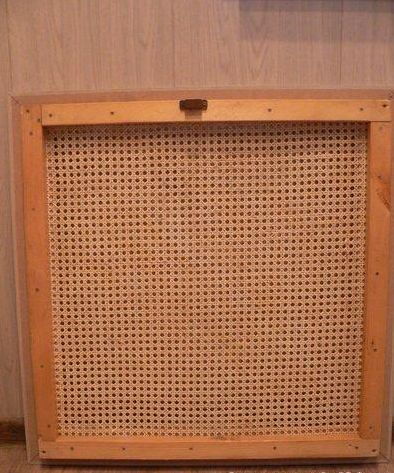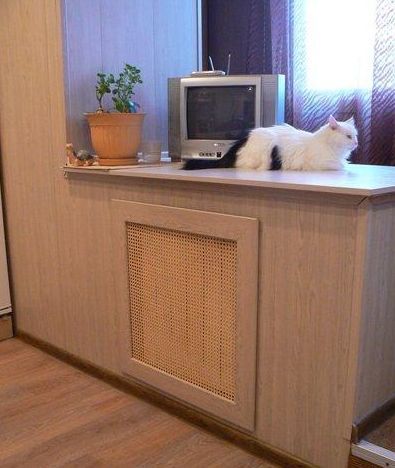Screens for radiators are a modern solution to the problem of obsolete heating elements that do not fit well into the interior. With relative cheapness and ease of installation, the screen eliminates the need to replace the radiator and supply pipes.
The screen for the battery is hung either on special brackets or directly on the elements of the heating system, which makes installation possible even without special skills and permits within 15-20 minutes.
Screens for batteries are metal products that visually close outwardly not very pleasant-looking radiators for heating, most of which are a decorative mesh for transmitting heat.
Screens for batteries are very relevant during renovation, as they are able to give the room a finished look.
Probably, many will agree that beautiful curtains or stylish blinds do not look at all with "Soviet"-style batteries, even if they are painted. In addition, the shape of previously manufactured batteries today does not look so aesthetically pleasing. Screens on radiators will help solve the problem.
They will hide the unsightly appearance of the pipe. In addition to decorative functions, battery screens perform several protective functions. Everyone knows how quickly dust settles on the battery. Installed in the apartment screens on radiators serve as an excellent obstacle to the "ubiquitous" dust.
But not only this function ensures the demand for our products. Batteries of an outdated design quite often cause injuries. This circumstance must be taken into account if children live in the apartment. Due to the absence of sharp points in the design, these products are absolutely safe.

The perforated screen is more environmentally friendly. It looks much sleeker than its metal brother. You can make patterns at the request of the client, which will increase the cost of the goods, and, consequently, your profit. To make a radiator, we need a wooden plank, plywood or chipboard, a sheet of perforated chipboard, a saw or a jigsaw, self-tapping screws, paint, varnish, foil. Most likely, you have the tools, and the materials are easy to buy at the construction market or stores like OBI.
To begin with, it is worth building two square profiles according to the size of the battery with an allowance of 5-7 cm on the sides, and on the underside to the floor. After that, the top, them and the sides of the profiles are sheathed with plywood, plasterboard or chipboard around the perimeter, leaving the back and front sides open.
Then we put a sheet of foil behind the battery, put on the screen and connect the whole structure. Foil is needed to better reflect heat. If the pipes approach the radiator from the side, you will need to cut a hole to put on the screen.
Another option is not to make side walls and put the screen on top. The choice is at the discretion of the customer. After that, all you have to do is cut out a decorative perforated chipboard grill to size and attach it to the screen from the front side. Next, the screen can be painted or varnished to give the desired shade.

First you need to soak the rattan cloth in warm water in the bathroom or in a large basin for about two hours, so that the cloth is easier to pull on the wooden frame, since it is very hard and fragile at the same time when dry.
Assemble the wooden frame. To do this, you need ordinary wooden slats about 2x3cm. (photo attached). Stretch the canvas over the frame and secure it with small nails or a furniture stapler and leave to dry.

Then the platbands are connected to each other at a right angle, with the same furniture stapler. When the individual parts of the screen are ready, it is necessary to fasten the frame to the frame from the casing with screws from the inside.
Naturally, before work, you carefully measure the size of the hole in the wall in front of the battery. So that subsequently the frame enters exactly into the opening. By the way, if a designer is sleeping in you, then the platbands can be painted using the craquelure technique, or you can choose the platbands not in the color of the walls, but, for example, in the color of the plinth, this is someone who has enough imagination for what, it looks just gorgeous!

The result of the work done is attached for viewing.
